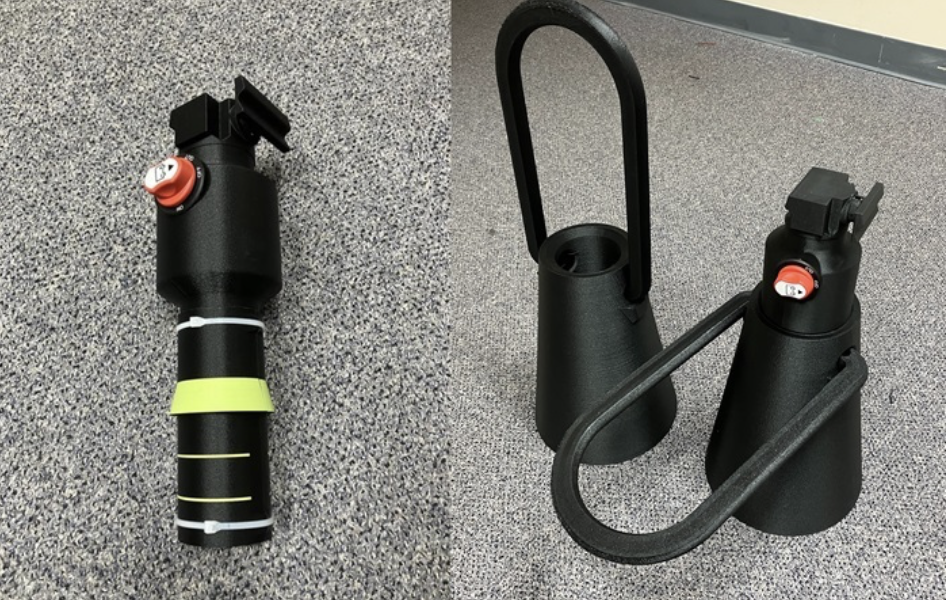There is a futuristic aircraft patrolling the skies of Columbia County, and its official name is Razor Crest.
No, this isn’t some science fiction Star Wars spaceship from Disney+. It’s a drone used for aerial mapping by the Columbia County Geographic Information Systems (GIS) Department that began flying in March. When the Federal Aviation Administration told Larry Hobbs, the GIS Department director, that he would have to give his registered drone a name, he chose the spacecraft from the television series “The Mandalorian.”
It’s manufacturer, Wingtra, calls it the WingtraOne. You could call the aircraft the Swiss watch of drones. It’s manufactured in Switzerland and cost the county $35,000, including training, Hobbs said.
MORE: Hundreds of houses proposed for new south Augusta subdivisions
Like its fictional namesake, it can make vertical take-offs and landings.
“It’s the best tool to use because of the VTOL take-off and landing,” said Lindsey Stokes, one of the drone’s two pilots.
In this case, pilot might not be the correct term since they don’t technically fly the aircraft. Instead, Stokes and her teammate, Lynn Wilkinson, program the drone to cover a limited geographic area, say 60 acres or so at a time. They input some basic information into a tablet computer, set the Razor Crest upright, check the battery and camera and then let the drone do the rest. The drone’s software flies the aircraft automatically and will even return to the landing spot if the winds are too high, all on its own.
“It took the liability off the operators’ hands and put it back on the bird,” Hobbs said. “We keep on the cutting edge.”
The GIS Department also has a much less expensive, Chinese-made helicopter drone. For the quad helicopter drone to cover 60 acres would take a full day in the field and then two days of processing the images. Now it takes about half a day to process the images.
“Now we can do 60 acres in 25 minutes,” Stokes said. “It cut our time down by more than half and really cut down our processing time even more than that.”
The high-quality images are snapped on a Sony RX1R camera and stored on a 128-gigabit SD card. The GIS team uploads the images to the county’s website for anyone to view and use.
The updated maps help utility workers find poles and manhole covers in new developments where Google maps or other imagery may be outdated, Stokes said. The tax department uses the maps to assess property values.
MORE: Impact of Masters Week on Augusta Regional Airport
The county mapping team also assists the Columbia County School District with looking at traffic patterns during drop-off and pick-up times at schools. The aerial photos help school administrators adjust how they move cars and children during those times to keep traffic backups to a minimum, such as having two car lines instead of just one.
The drone’s battery will keep it flying for 59 minutes and the radio control is good for about six miles, by line of sight, according to Wingtra’s technical specs information. The extra range comes in handy when the GIS team need photographs of swampy or rugged areas of the county.
“It might be dangerous for a county employee to get there,” Stokes said. “It really helps.”
The drone has already saved the county money, Hobbs said. The county opened a temporary landfill for storing broken concrete and other road improvement debris on Williams Few Parkway and the state permit cost the county $200,000. If the landfill reaches capacity quickly, the county would have to pay another $200,000 to open another landfill. Instead, the GIS team fly the drone over the landfill periodically to keep county authorities apprised of how full the facility is getting, Hobbs said.
Joshua B. Good is a staff reporter covering Columbia County and military/veterans’ issues for The Augusta Press. Reach him at joshua@theaugustapress.com











